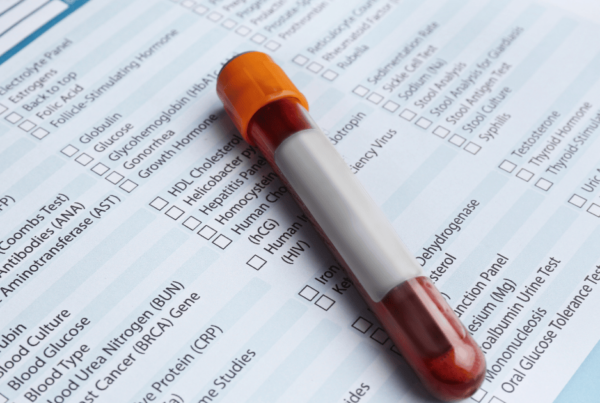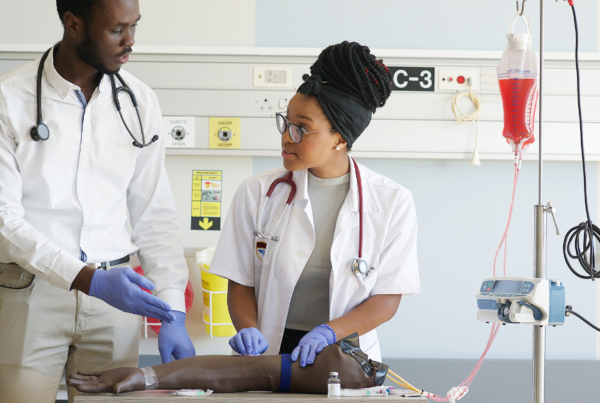Ever wondered what is hemoconcentration and how it can impact your role as a phlebotomist? It might sound complex, but understanding hemoconcentration is essential for ensuring accurate blood test results. Simply put, hemoconcentration refers to an abnormally high concentration of red blood cells and other cellular elements in the blood, caused by a decrease in plasma volume. This can significantly skew blood test results, potentially leading to misdiagnosis and improper patient management.
In this comprehensive guide by Phlebotomy Now School, we’ll delve into the world of hemoconcentration, exploring its causes, how it affects test results, and most importantly, how to prevent it during phlebotomy procedures. By mastering these concepts, you can ensure the integrity of blood samples and contribute to optimal patient care.
| Key Takeaways |
| Hemoconcentration is an increase in the concentration of red blood cells and other cellular elements in the blood, caused by a decrease in plasma volume. |
| It can significantly impact the accuracy of blood test results, potentially leading to misdiagnosis and improper patient management. |
| Common causes of hemoconcentration during phlebotomy include patient posture, prolonged tourniquet application, and fist pumping. |
| By following best practices like proper patient positioning, minimizing tourniquet time, and maintaining proper technique, phlebotomists can effectively prevent hemoconcentration. |
| Accurate documentation of blood collection procedures helps laboratories interpret test results in context. |
Causes of Hemoconcentration During Blood Draws
Several factors can contribute to hemoconcentration during blood collection. Three of the most typical causes will be covered here:
- Patient Posture: When a patient transitions from a lying-down position to sitting or standing, their body experiences a change in blood flow dynamics. To maintain adequate blood supply to the brain, blood pressure increases. This triggers the release of hormones that cause capillaries to become more porous, allowing fluids to move from the bloodstream into the tissues. This fluid shift results in a temporary state of hemoconcentration in the veins, potentially affecting blood test results.
- Prolonged Tourniquet Application: A tourniquet is a crucial tool used to locate a vein for blood collection. However, leaving the tourniquet on for an extended period (longer than one minute) can lead to hemoconcentration. When the tourniquet restricts blood flow for too long, fluids leak out of the capillaries, concentrating the cellular components in the remaining blood.
- Fist Pumping: Some patients might clench their fists repeatedly to help locate a vein. While this may seem like a helpful gesture, it can actually contribute to hemoconcentration. Muscle exertion under the tourniquet leads to fluid loss from the blood vessels, concentrating the cellular elements within.
How Hemoconcentration Affects Blood Test Results
Hemoconcentration can significantly alter the concentration of various analytes (substances) measured in blood tests. This can lead to:
- Falsely elevated results: When the proportion of cells in the blood increases due to hemoconcentration, the concentration of certain analytes (like protein or red blood cells) may appear higher than they actually are. This could lead to misdiagnosis and unnecessary treatment.
- Falsely low results: Conversely, some analytes (like electrolytes or water-soluble substances) may appear diluted due to fluid loss during hemoconcentration. This could mask underlying health conditions and delay necessary treatment.
Here’s a table summarizing some of the analytes commonly affected by hemoconcentration (Note: This list is not exhaustive):
| Analyte | Potential Impact of Hemoconcentration |
| Albumin | Increased |
| Calcium | Increased |
| Cholesterol | Increased |
| Potassium | Increased |
| Red Blood Cells (RBCs) | Increased |
| Total Protein | Increased |
| Triglycerides | Increased |
Preventing Hemoconcentration in Phlebotomy Practice
By following these best practices, you can effectively prevent hemoconcentration during blood collection:
- Position the patient appropriately. Whenever possible, have the patient lie down for blood draws, especially when testing for posture-sensitive analytes. If the patient must be seated, elevate their legs slightly to promote blood flow return.
- Minimize tourniquet time. Apply the tourniquet only when necessary to visualize the vein and release it as soon as possible after successful venipuncture. Aim for a tourniquet application time of less than one minute according to CLSI guidelines (Clinical and Laboratory Standards Institute).
- Discourage fist pumping. Educate patients about the potential drawbacks of fist pumping and encourage them to remain still during the blood draw procedure.
- Maintain proper technique. Utilize proper vein selection and venipuncture techniques to minimize the number of attempts and shorten blood collection time.
- Document accurately. Document the patient’s posture and any challenges encountered during blood collection on the requisition form. This information helps the laboratory interpret the test results in context.
Clarifying Common Phlebotomy Terms: Hemoconcentration vs. Hemoaspiration
Understanding medical terminology is crucial for phlebotomists to ensure accurate blood draws and patient safety. Two terms that can sometimes cause confusion are hemoconcentration and hemoaspiration. While they share the root word “hemo” referring to blood, they represent distinct concepts.
Hemoconcentration:
- Defined as an abnormally high concentration of red blood cells and other cellular elements in the blood due to a decrease in plasma volume.
- Can be caused by various factors during phlebotomy, such as prolonged tourniquet application, patient posture, or fist pumping.
- Leads to altered blood test results, potentially impacting diagnoses and treatment decisions.
- Preventable through proper phlebotomy techniques like minimizing tourniquet time and maintaining proper patient positioning.
Hemoaspiration:
- Refers to the accidental withdrawal of blood into the syringe during a phlebotomy procedure, instead of just aspirating a small amount of blood to confirm vein entry.
- Can cause hemolysis (destruction of red blood cells) and lead to inaccurate test results.
- Preventable by careful needle placement and applying gentle suction only after visualizing blood in the syringe hub.
Key Differences:
| Term | Definition | Impact on Blood Draw | Prevention Techniques |
|---|---|---|---|
| Hemoconcentration | Increased cellular concentration due to decreased plasma volume | Altered test results | Proper phlebotomy techniques (tourniquet time, posture) |
| Hemoaspiration | Accidental withdrawal of blood into the syringe | Hemolysis, inaccurate test results | Careful needle placement, minimal suction |
By understanding the distinction between hemoconcentration and hemoaspiration, phlebotomists can perform blood draws more effectively and contribute to the accuracy of laboratory tests.
Conclusion
Understanding hemoconcentration and its potential impact on blood test results empowers phlebotomists to become active partners in ensuring accurate diagnoses and optimal patient care. By adhering to the best practices outlined above, you can minimize the risk of hemoconcentration during blood draws and contribute to the delivery of high-quality healthcare.
FAQs:
What are some signs of hemoconcentration?
Unfortunately, hemoconcentration itself doesn’t present any outward signs or symptoms in a patient. It’s only detectable through the potential discrepancies in blood test results.
How can I tell if my blood draw was affected by hemoconcentration?
If you’re concerned about the potential impact of hemoconcentration on your blood draw, you can discuss it with the phlebotomist or healthcare professional who collected the sample. They may be able to provide information about the collection procedure and any factors that could have influenced the results.
What happens if my blood test is affected by hemoconcentration?
In some cases, the laboratory may be able to identify potential hemoconcentration based on the results and may order a retest. The healthcare professional interpreting the results will consider the possibility of hemoconcentration in conjunction with your other medical history and symptoms.
How can I avoid hemoconcentration during a blood draw?
There’s not much you can directly control during the blood draw itself. However, you can mention any concerns you have about hemoconcentration to the phlebotomist beforehand. Staying still and following their instructions during the procedure can help them collect the sample efficiently.
Become a Phlebotomy Expert: Avoid Hemoconcentration
At Phlebotomy Now School, we are committed to providing comprehensive phlebotomy education that equips you with the knowledge and skills necessary to excel in this vital field. Our curriculum emphasizes not only technical proficiency but also the critical role of phlebotomists in maintaining test result accuracy and patient safety.
We encourage you to explore our comprehensive phlebotomy training programs designed to equip you for a rewarding career in phlebotomy. With a strong foundation in hemoconcentration and other key concepts, you can confidently contribute to the healthcare team and ensure the well-being of patients.
The following further materials might be useful to you:
- National Phlebotomy Association
- Clinical and Laboratory Standards Institute
- American Society for Clinical Pathology
Remember, your expertise and commitment to best practices make a significant difference in patient care. Keep learning, keep growing, and take pride in the vital role you play in the healthcare system!


